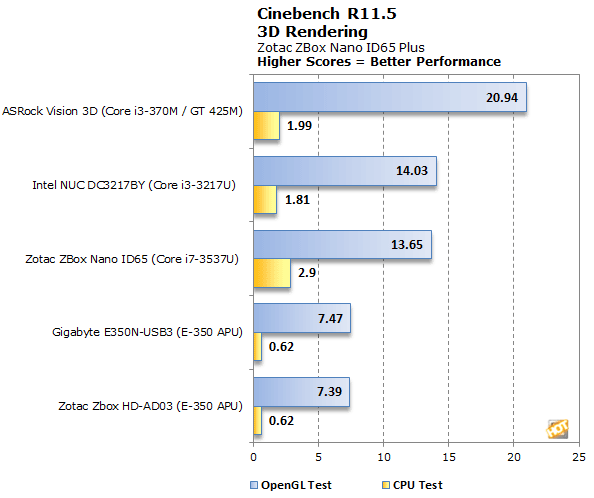Zotac ZBOX Nano ID65 Plus Out NUCs Intel
Performance: Cinebench and 3DMark
Cinebench R11.5 is an tile-based rendering performance test based on Cinema 4D from Maxon. Cinema 4D is a 3D rendering and animation tool suite used by 3D animation houses and producers like Sony Animation and many others. It's very demanding of system processor resources and is an excellent gauge of pure computational throughput.
|
|
|
This is a multi-threaded, multi-processor aware benchmark that renders a single 3D scene and tracks the length of the entire process. The rate at which each test system was able to render the entire scene is represented in the graph below.

Like the PCMark Vantage tests on the previous page, the ZBox Nano ID65 Plus blows past the lower-power platforms, but it trailed the ASRock system and Intel's NUC in the OpenGL test--mostly likely due to the Zotac's system single-channel memory configuration, which offers half the bandwidth of the NUC or ASRock rig. In the CPU test, however, the ZBox Nano ID65 Plus takes a clear lead.
|
|
|
3DMark Vantages built-in CPU tests are multi-threaded DirectX gaming metrics that are useful for comparing relative performance between similarly equipped systems. This tests consists of two different 3D scenes that are processed with a software renderer that is dependent on the host CPU's performance. Calculations that are normally reserved for the 3D accelerator are instead sent to the CPU for processing and rendering. The system's performance in each test is used to determine the final score.

The ZBox Nano ID65 Plus' Core i7 processor is clearly more powerful than the Core i3 used in the ASRock system or the low-power E-Series APUs or Atom processor used in the other systems.






